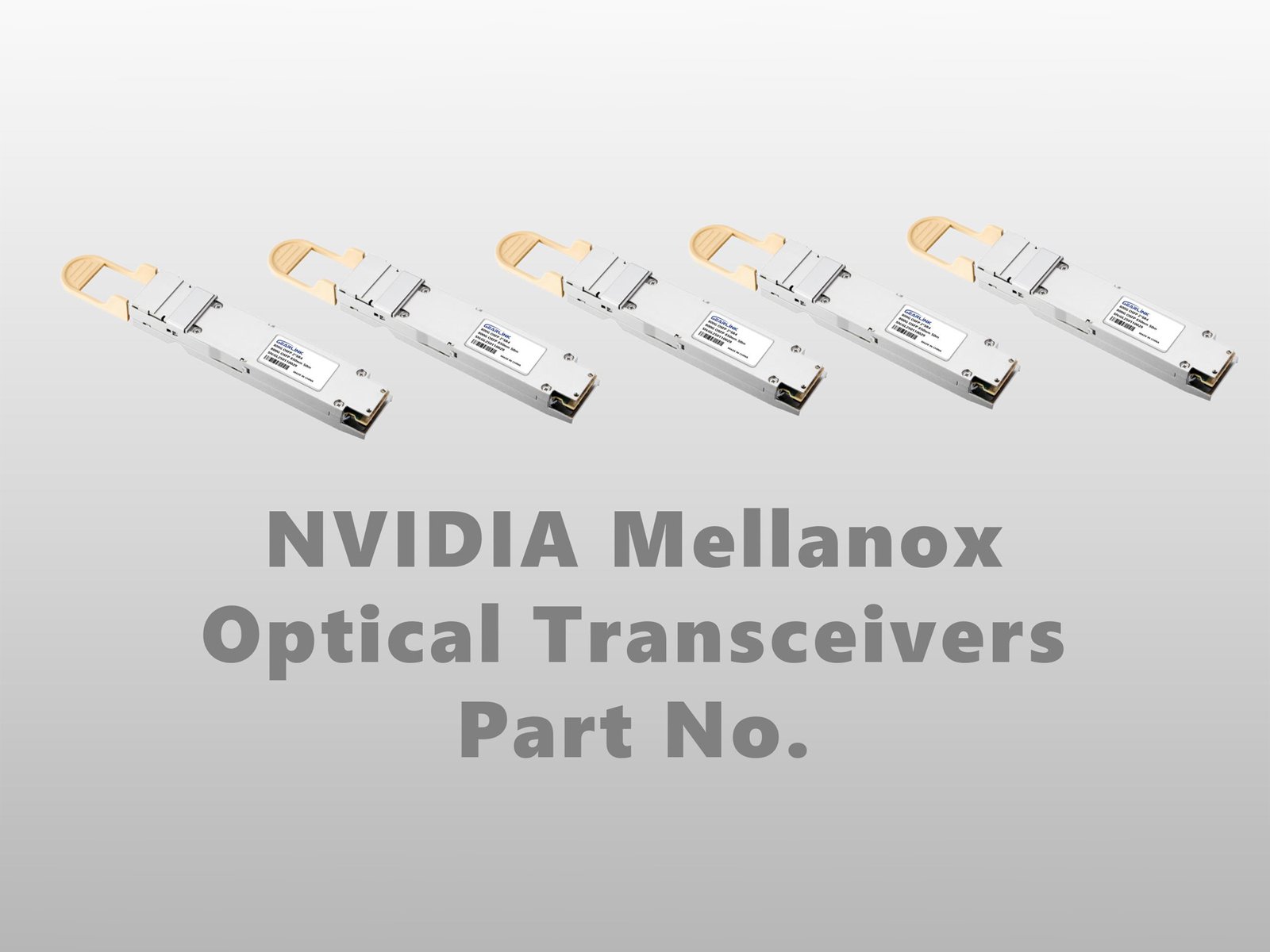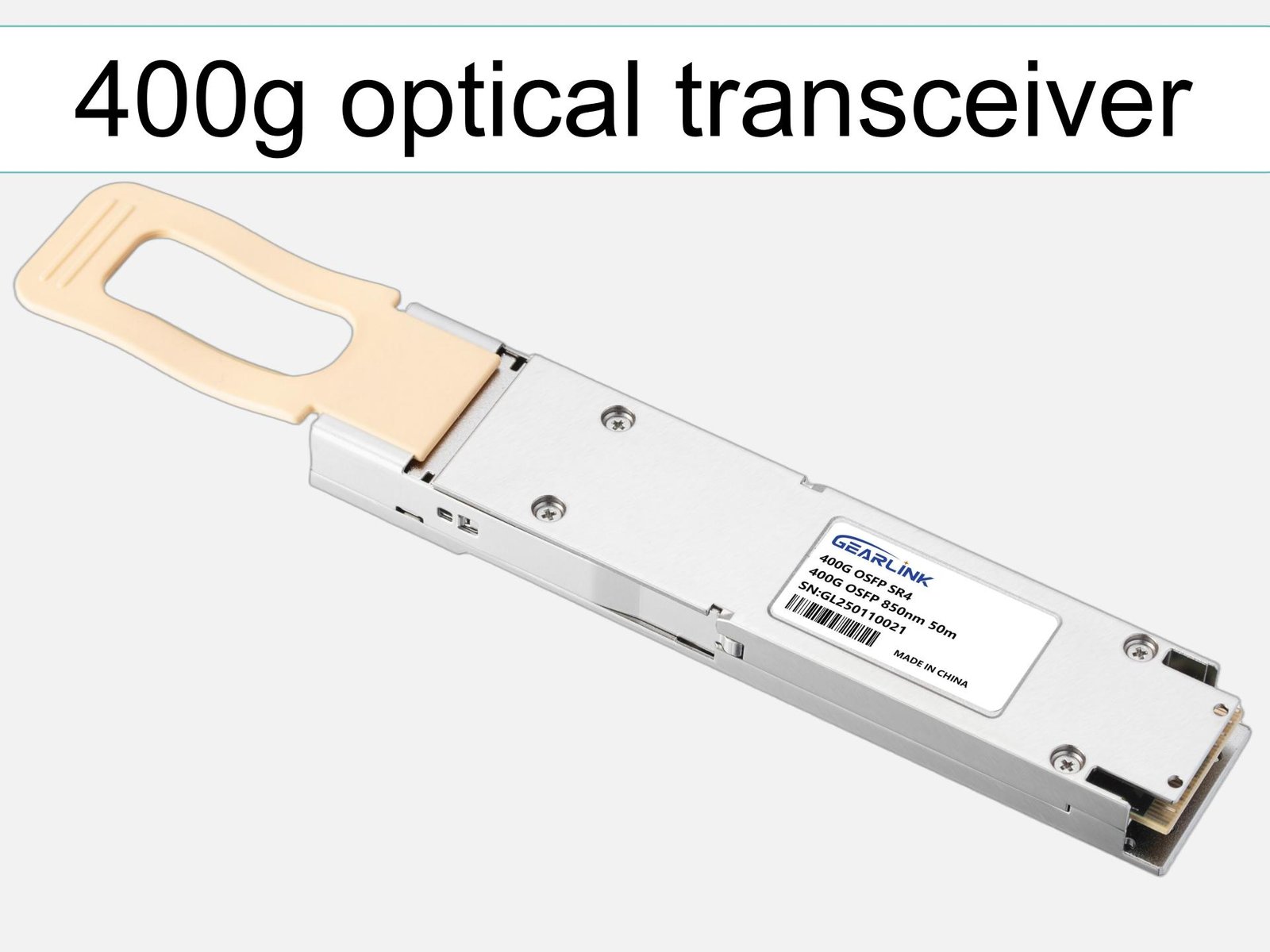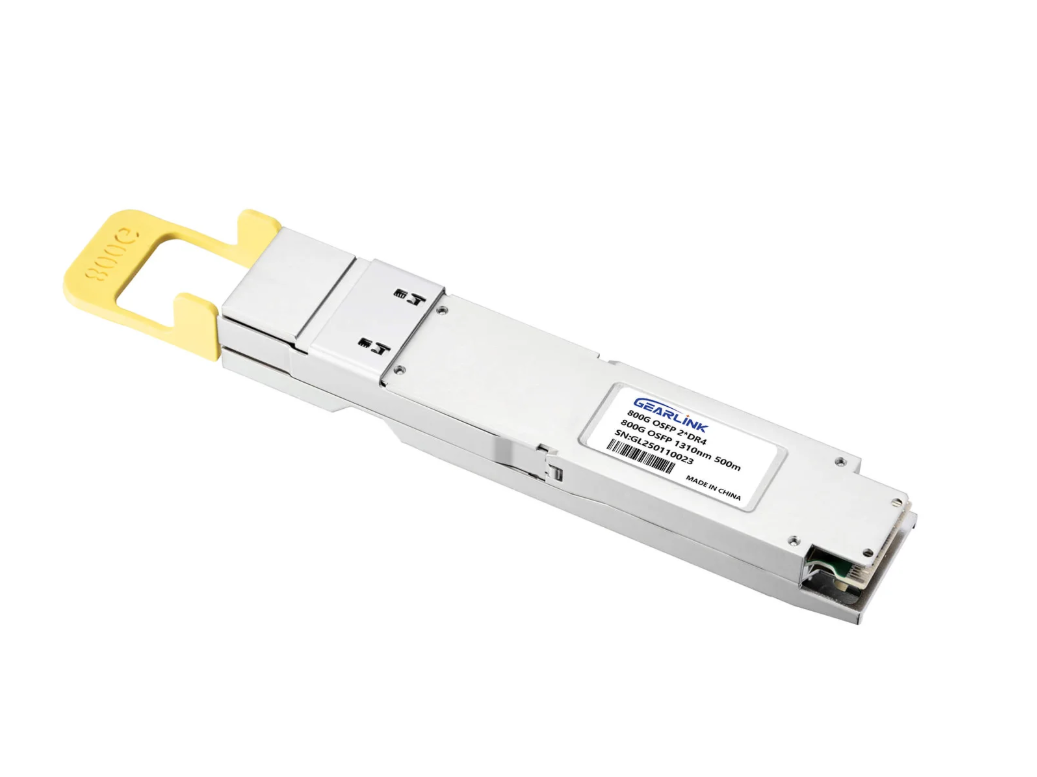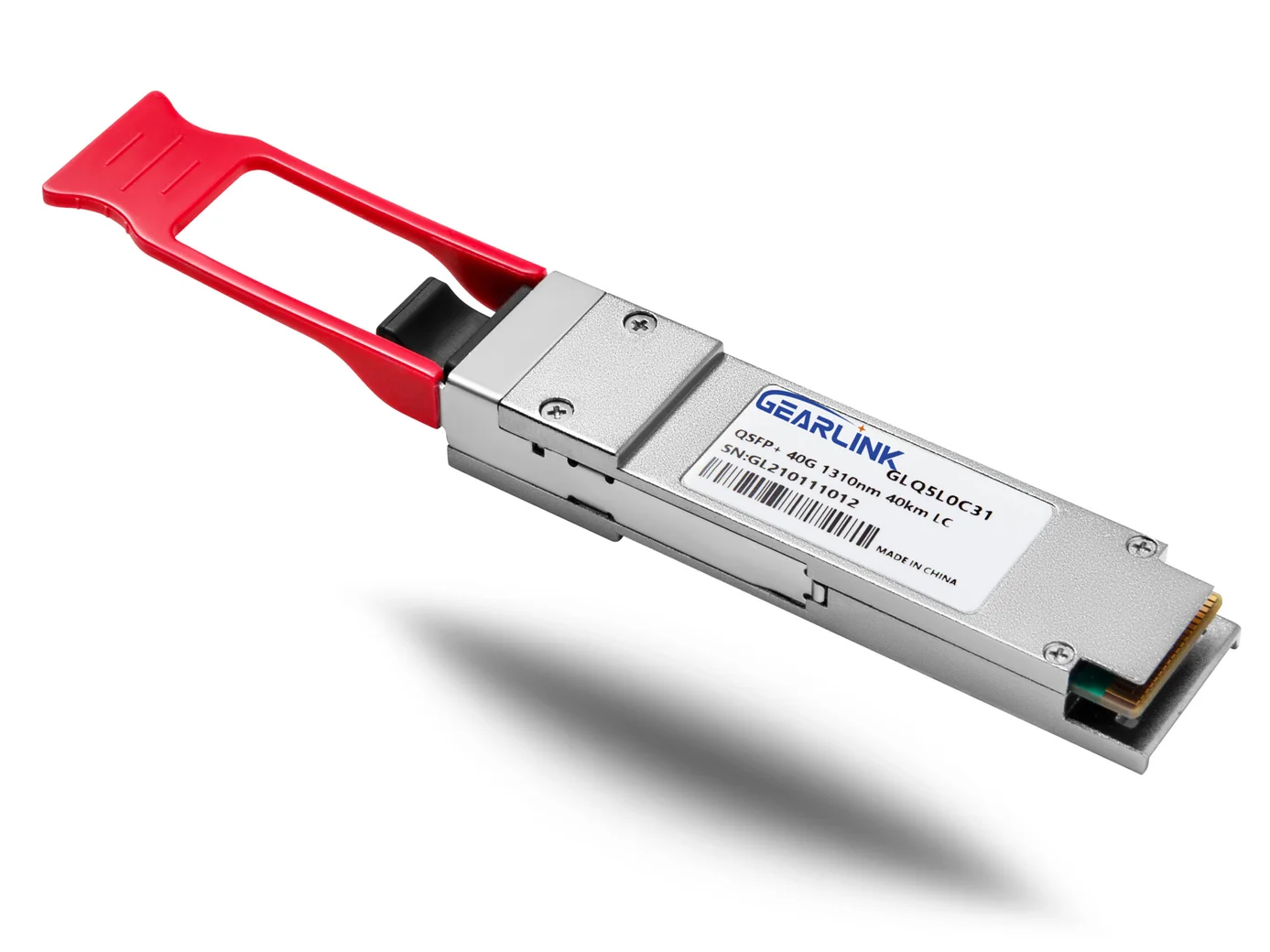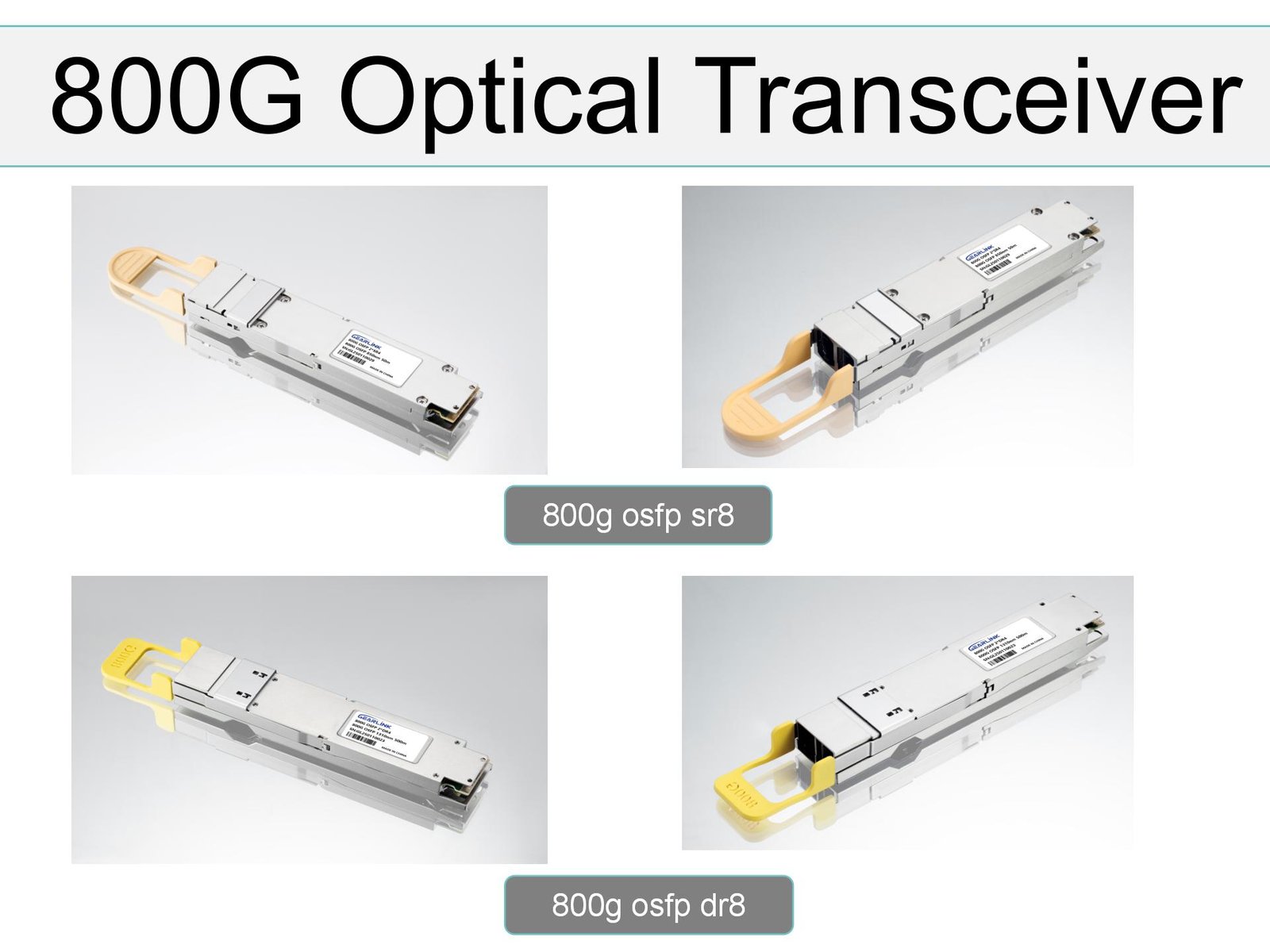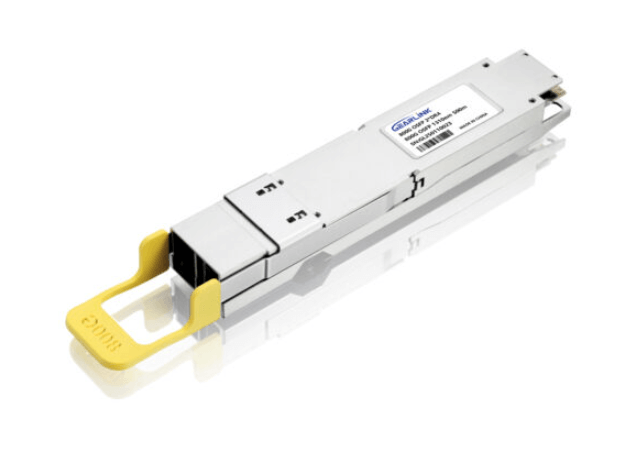1. Overview of NVIDIA Mellanox Ethernet Optical Transceivers
As artificial intelligence continues to flourish across industries, modern supercomputing centers are increasingly demanding higher bandwidth and lower latency. High-speed Ethernet optical transceivers play a critical role in enabling network interconnects and efficient data transmission. NVIDIA Mellanox provides a range of high-performance Ethernet optical transceivers from 100G to 400G, supporting connectivity between data center switches and servers.
In GPU-accelerated AI systems, these high-speed optical transceivers facilitate massive parallel computing and low-latency data exchanges, driving more efficient computational performance. Additionally, with the growing complexity of data center architectures, the demand for high-speed links between switches and between switches and servers continues to rise. NVIDIA Mellanox optical transceivers offer high-speed performance, reliability, and ultra-low latency, making them ideal for such high-demand scenarios.
2. Optical Transceiver Configurations
NVIDIA Mellanox offers a broad portfolio of Ethernet optical transceivers, covering speeds including 1G, 10G, 25G, 50G, 100G, 200G, and 400G to meet diverse network architecture needs. The selection of a specific optical transceiver configuration depends heavily on factors such as transmission distance, bandwidth requirements, network topology, and application scenarios.
Their Ethernet optical transceivers come in single-channel, four-channel, and eight-channel configurations, utilizing NRZ and 50G PAM4 modulation, and are available for both 850nm multimode and 1310nm single-mode fiber. Form factors include SFP (Small Form-Factor Pluggable), QSFP (Quad Small Form-Factor Pluggable), and QSFP-DD (Quad Small Form-Factor Pluggable Double Density).
One example is the 100GbE DR1 500m optical transceiver, which integrates a single-channel 100G-PAM4 optical device and an internal gearbox. This allows it to convert a single 1310nm wavelength optical signal into four 25G NRZ electrical lanes, typically used in conjunction with a 400G DR4 transceiver with breakout cables to connect new 400G-PAM4 systems to legacy 100G (4x25G NRZ) networks.
All LinkX optical transceivers are 100% factory-tested in end-to-end configurations. Compared to industry standards and competitors, they deliver superior BER (bit error rate) performance. NVIDIA offers multiple optical transceiver options for GPU, CPU, and storage networking within any data center setup. These modules are also energy-efficient, integrating advanced optical technologies that reduce power consumption while maintaining high transmission quality—perfectly aligning with green, energy-saving data center initiatives.
3. Use Environments for Long-Distance Optical Transceivers
Common network topology scenarios for optical transceivers include TOR (Top-of-Rack), Leaf-Spine, and Spine-Super Spine architectures. These structures demand consistent performance across varying distances, requiring optical transceivers with strong launch power and high receive sensitivity to ensure scalability and reliability in large-scale deployments.
Long-distance models such as 500m PSM4/DR4, 2km CWDM4/FR4, and 10km LR4 are used to traverse complex networks via single-mode fiber. For shorter distances up to 100 meters, multimode SR/SR4/SR8 versions are the most popular and cost-effective options.
With a rational selection of transceiver types, data centers can achieve flexible deployments across different levels of the network architecture to meet diverse distance and bandwidth needs.
4. Features and Advantages
As branded optical transceivers, NVIDIA Mellanox products are known for their high reliability and performance. Each unit undergoes strict factory testing and extensive certification on NVIDIA switches and GPU-based systems. Their low latency and stable long-distance transmission performance give them significant advantages in real-world deployments.
The comprehensive product line covers various network configurations. Moreover, NVIDIA Mellanox transceivers are designed to exceed IEEE BER standards, ensuring exceptional performance even under high-traffic and low-error-rate conditions.
5. Configuration Table of NVIDIA Mellanox Ethernet Optical Transceivers
This article summarizes the following key models:
MMS1V90-WR, MMS1V50-WM, MMS1V00-WM, MMA1U00-WS, MMS1W50-HM, MMA1T00-VS, among others. Please refer to the configuration table below for detailed specifications.
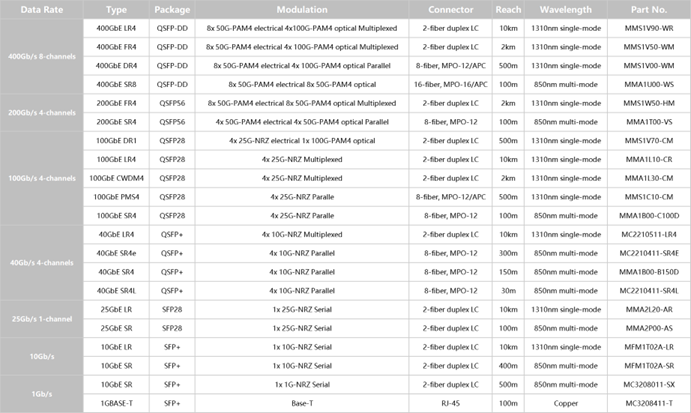
6. Conclusion
With features like high speed, low latency, and exceptional reliability, NVIDIA Mellanox Ethernet optical transceivers have become indispensable components in modern data centers and AI infrastructures. Whether for switch-to-switch interconnects, server connectivity, or high-speed GPU-accelerated data transmission, Mellanox transceivers deliver efficient and stable solutions.
The broad product lineup and flexible configuration options—from 25G to 400G—enable these transceivers to support a wide range of application needs and ensure optimal performance across complex network architectures. With their superior performance and cost-efficiency, NVIDIA Mellanox optical transceivers provide strong support for global data centers and high-performance computing environments.
